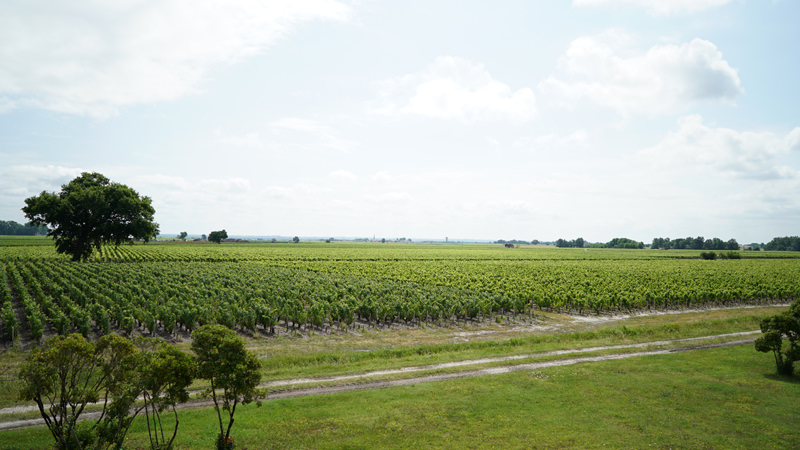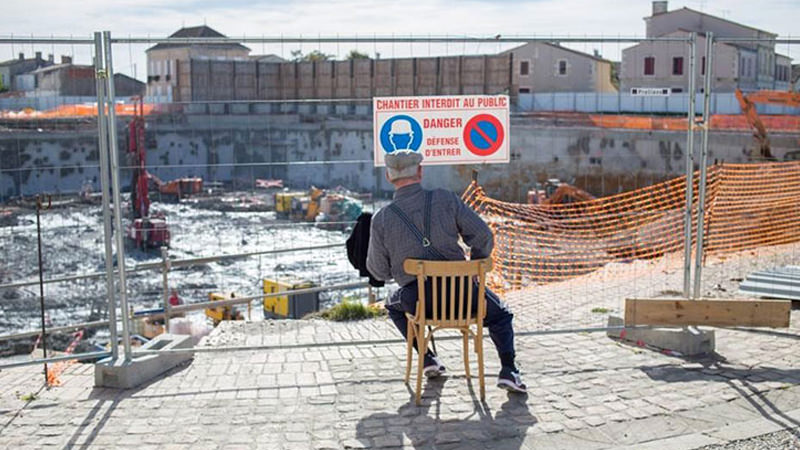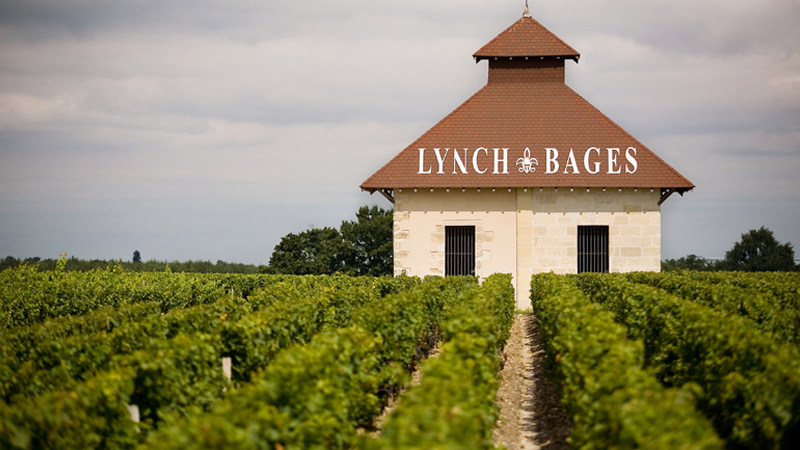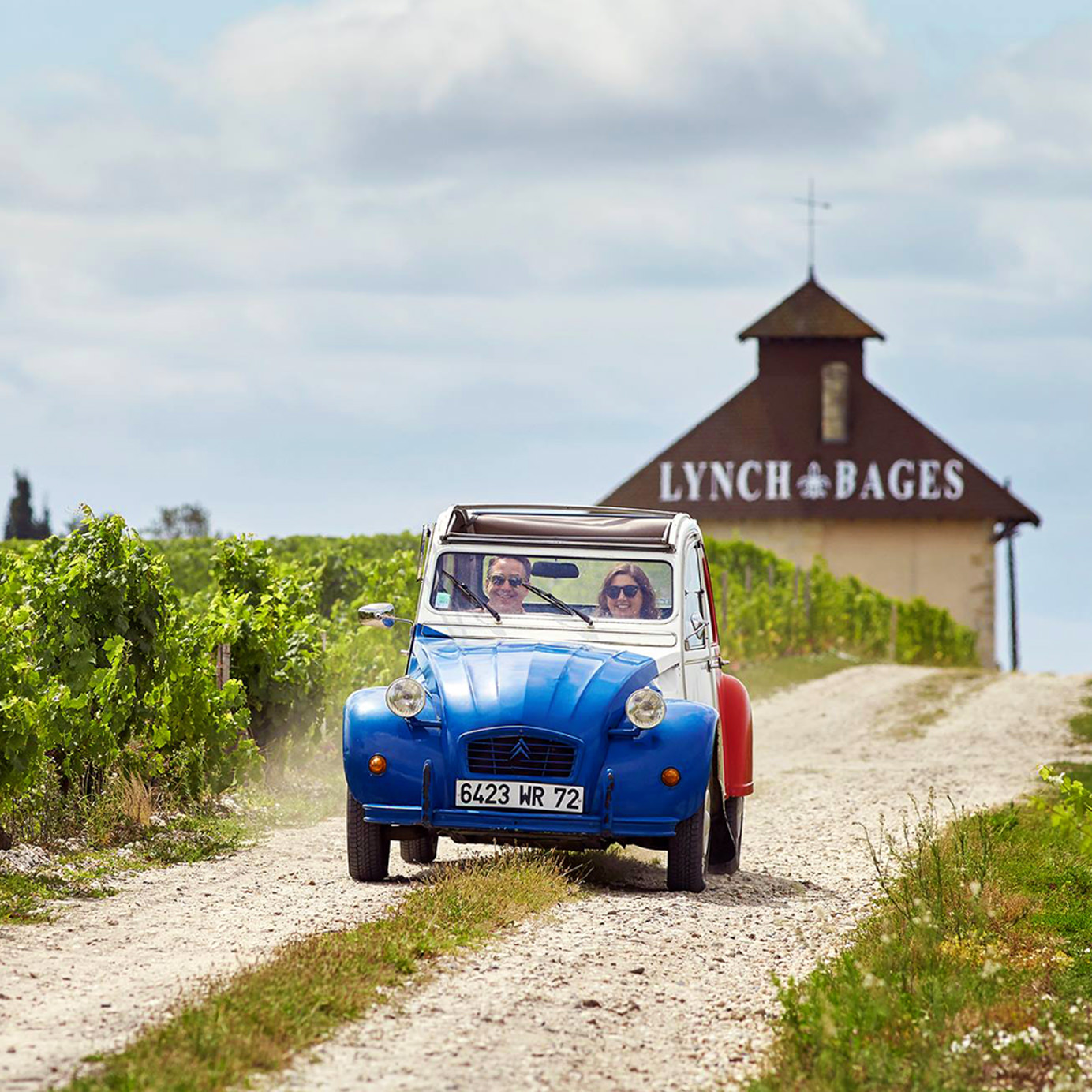Château Lynch-Bages, one of the best-known fifth-growth châteaux in Bordeaux, is getting a serious facelift. The renovation involves a massive overhaul of the estate’s winemaking facilities from start to finish, and is projected to be completed by 2019. Architect Chien Chung Pei, son of I.M. Pei, who created the Louvre’s glass pyramid, is overseeing the redesign.
The rehaul of châteaux like Lynch-Bages — and comparable investments at other fifth-growth estates, like Château Grand-Puy-Lacoste, Château Pontet-Canet, and Château Clerc Milon — are part of a collective metamorphosis happening in Bordeaux. These houses are remodeling their wineries, yes; but through technological advancements and savvy business decisions, they’re restructuring the Bordeaux classification itself.
Consider Lynch-Bages’ recent acquisition of another fifth-growth château, Château Haut-Batailley, from the Boire family. The Boire family owns another fifth-growth leader, Grand-Puy-Lacoste. “It’s the deal of a lifetime,” Lynch-Bages owner Jean-Charles Cazes said in an interview. “It’s a unique opportunity to write a new story.”
The narrative goes beyond mergers and acquisitions, telling the story of elite competitors challenging and capitalizing on their place at the base of a very powerful pyramid. By embracing change within a structure that’s been static for 163 years, forward-thinking fifth-growth châteaux are profiting from their proximity to and distance from the higher rungs.
It’s innovation in a space that’s adhered to tradition for centuries. It’s modernization, adaptation, and marketing rolled into one. From soil research to technological upgrades to shooting wine into space, fifth-growth châteaux are proving their wines are the future.

Fifth-growth Bordeaux is a grouping of 18 producers in the Médoc, primarily in Pauillac, designated by Napoleon III in what is known as the Bordeaux Wine Official Classification of 1855. As estates have been passed down from generation to generation, the classification system has remained largely unchallenged. Now, however, some wine experts are calling it into question.
The 1855 decree was “based entirely off of how much wines were selling in the marketplace at the time,” Nick Duble, sommelier at L’Atelier de Joël Robuchon in New York, says. “Since then, it hasn’t changed at all, but a lot has changed in Bordeaux.”
In the last 150-plus years, estates have been bought, sold, and remodeled, and winemaking methods have modernized. These are all things that have improved wine quality and, in some cases, challenged status quo. Pontet-Canet, for example, is one of a handful of the 61 classified châteaux that are making biodynamic wines.
“In the past 50 years, if you break down the classification, the one growth that has made the most progress is the fifth growth,” Oscar Chinchilla, beverage manager and sommelier at Montage in Beverly Hills, says. Fifth-growth estates are embracing their place in the pyramid — the underdogs of high-society wine — by making improvements that convince consumers their wines are worth buying and collecting.
Live-ex, a fine-wine trading platform based in London, publishes a recreation of the Bordeaux classification every two years, based on current market prices. In 2017, five fifth-growth châteaux moved up from their 1855 slots: Lynch-Bages and Pontet-Canet are second growth; Grand-Puy-Lacoste and Clerc Milon are third growth; and Haut-Batailley is fourth growth.
Although Duble and other sommeliers find this hypothetical reclassification amusing, the list is no joke – it’s proof of a rapidly changing system.
Fifth-growth winemakers “still respect the land, they still respect the laws and the rules that were said back in 1855, but they’re trying to adapt to the consumer,” Chinchilla says. As a result, more wine drinkers are being exposed to these wines, and wowed by their quality.
Château Clerc Milon makes one of Chinchilla’s favorite wines. “You can buy a nice Clerc Milon for 60 bucks,” he says. “They’ve invested so much money on infrastructure, on planting, on elevating the quality. I’d rather spend 80 or 100 bucks on a fifth growth like Lynch-Bages, Clerc Milon, or Pontet-Canet than spend three or four hundred bucks for a Cos d’Estournel [second growth],” he says. “The quality is there.”

Savvy fifth-growth estates are also taking advantage of their positions as classified winemakers to reach a wider consumer base, promoting and selling their wines in unique ways.
“Lynch-Bages is a prime example of really successful marketing,” Duble says. In 1985, Lynch-Bages sent the first bottle of wine into space. The following year, it began promoting its wine in China, where it remains one of the country’s strongest brands. In 1989, it unveiled a new winemaking facility, which produced one of the estate’s best vintages. Also that year, Lynch-Bages debuted its tourist-friendly Cordeillan-Bages hotel.
Lynch-Bages offers private tours and even offers a tourist-driven winemaking program through Viniv, a company that enables wealthy wine enthusiasts to create their own labels. It’s an ultra-elite experience for the ultra-rich, yes; but it’s also a little relatable, and a little rebellious. Viniv CEO and founder Stephen Bolger describes the company as an “experiential luxury company.”
“Think it takes a lifetime to become a winemaker?” the Viviv website reads. “Think again.”
Viniv customers can mix grapes from different vineyards and even different appellations, and go home with a barrel’s worth of their own wine. It’s the millennial mindset for high-powered businesspeople; the Rosé Mansion for millionaires.
One Viniv customer, Pete Johnson, a Los Angeles custom cigar maker and entrepreneur, named his vintages after his dog (“Bone Ami”) and his tattoos (“Tatouage”). “This isn’t your Two-Buck Chuck,” Johnson told The New York Times in 2016.
“I’m not just making a wine, I’m making a memory,” Hank Werronen, another Viniv customer, said.
This isn’t just about publicity. These efforts are planting the seeds for future fifth-growth devotees.

As it stands, the top 100 most popular Bordeaux wines on the market include Lynch-Bages, Pontet-Canet, Grand-Puy-Lacoste, and Clerc Milon. Pontet-Canet currently claims one of the best wines in the region, based on scores from various critics.
What this list shows us is that Bordeaux’s most collectible wines are no longer limited to top-tier bottles from first- and second-growth châteaux. As fifth growths continue to improve, collectors are seeing the value in wines that don’t cost as much as their higher-growth predecessors.
Fifth-growth châteaux are never going to be first growths, but they don’t need to be. They’ve created an appeal all their own.
